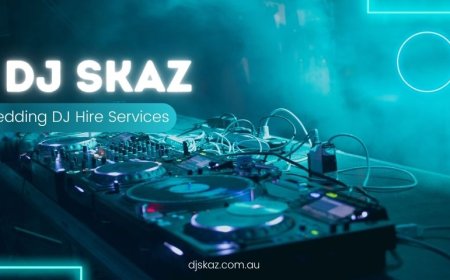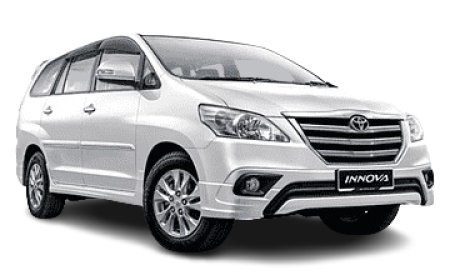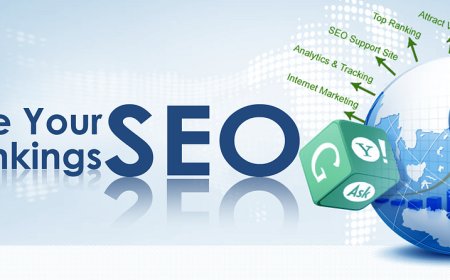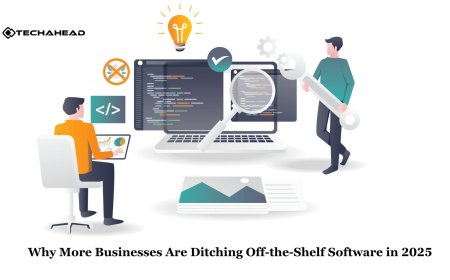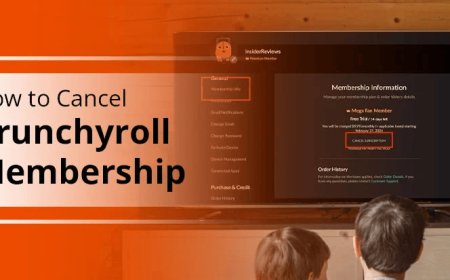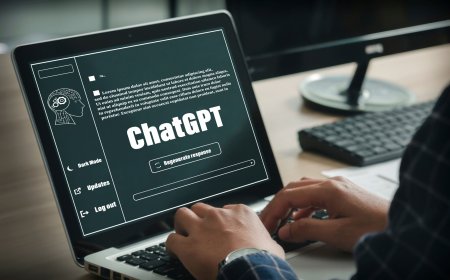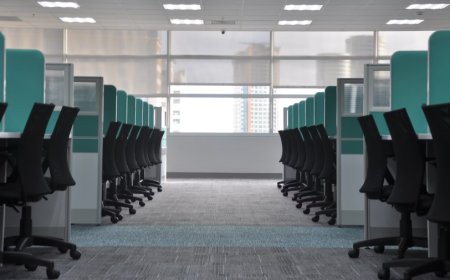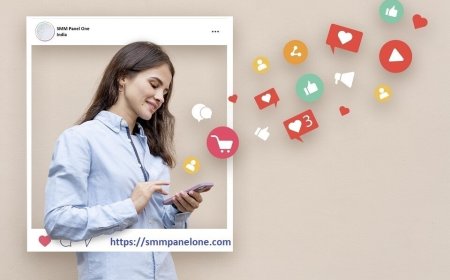The Role of Internal Linking in Boosting Site Authority
Discover how internal linking strategies can elevate your site's authority in 2025. Learn key techniques, benefits, and tools to improve SEO with expert guidance.

Internal linking is one of the most powerful yet underutilized strategies in search engine optimization (SEO). When implemented correctly, it not only enhances site navigation but also distributes link equity, improving rankings and boosting overall site authority. In 2025, internal linking plays an even more vital role due to evolving search engine algorithms that prioritize semantic structure, topical relevance, and user experience.
This in-depth guide explores the mechanics, benefits, and best practices of internal linkingand how it contributes to overall SEO success. Well also highlight how Rank Locally UK, a premier SEO Agency, can help elevate your internal linking game with expert services.
What is Internal Linking?
Internal linking refers to hyperlinks that connect one page to another within the same domain. Unlike external links that point to other websites, internal links keep the user within your ecosystem, guiding them through related content.
Examples include:
-
Navigation menus
-
Footer links
-
In-content anchor text links
Google uses these links to crawl websites, determine page relevance, and understand topic relationships.
Why Internal Linking Matters for SEO
Googles crawler relies heavily on internal links to discover new content and understand your websites structure. Here's why internal linking is essential:
1. Improves Crawlability and Indexing
Googlebot follows links to discover content. A well-structured internal linking system ensures that even deep pages are accessible, increasing the likelihood of being indexed.
2. Distributes Page Authority
Linking from high-authority pages to new or less visible ones passes link equity, boosting their chances to rank.
3. Enhances User Experience
Internal links help users navigate your website intuitively, reducing bounce rate and increasing time on site.
4. Reinforces Topical Relevance
Search engines interpret internal links as signals of related content, helping establish your site's topical authority.
Best Practices for Internal Linking in 2025
1. Use Descriptive Anchor Text
Avoid generic text like click here. Instead, use keyword-rich phrases like local SEO for small business or ecommerce website designing company.
2. Link to Relevant Content
Ensure that the linked pages are topically related to reinforce semantic relationships.
3. Dont Overlink
Limit the number of internal links on a single page. Too many can dilute link equity and confuse search engines.
4. Maintain a Shallow Link Depth
Keep important content no more than three clicks away from the homepage to improve accessibility.
5. Audit Regularly
Use tools like Screaming Frog or Ahrefs to identify orphan pages (pages with no internal links) and fix broken links.
Types of Internal Links
Navigational Links
Usually part of the sites main menu or sidebar, helping users reach major sections.
Contextual Links
Placed within the body of content to point users to related topics or further information.
Footer Links
Reinforce structure and accessibility, especially for legal or utility pages.
Case Study: Boosting Site Authority with Internal Linking
A UK-based e-commerce company improved their rankings by 42% in just 4 months by restructuring their internal linking strategy. By hiring a Top SEO Company, they:
-
Added contextual links in blog posts to product pages
-
Fixed broken internal links
-
Linked to newly published content from high-traffic articles
This not only improved keyword visibility but also drove higher conversions.
Internal Linking & Topical Clustering
In 2025, topic clusters are key. Internal linking binds a pillar page (core topic) to cluster content (supporting subtopics), guiding search engines through thematic relationships.
Example:
A pillar page on Local SEO can link to clusters like:
This structure supports Googles semantic search and builds site authority.
Tools to Manage Internal Links
-
Ahrefs Site Audit Identifies broken or orphaned pages.
-
Yoast SEO (for WordPress) Offers internal linking suggestions.
-
Screaming Frog Crawls your website for internal link data.
-
Link Whisper Uses AI to suggest relevant internal links.
How Rank Locally UK Can Help
Rank Locally UK is a results-driven digital partner providing end-to-end services that include internal link audits, content mapping, and SEO optimization.
Their offerings include:
SEO Services
As a Best SEO Company, they offer:
-
Internal link structure audits
-
Semantic topic clustering
-
On-page SEO strategies
Website Development Services
As a top-tier Web Development Company, they ensure:
-
Custom CMS structure for scalable linking
-
Clean navigation paths
-
Fast-loading and SEO-friendly architecture
Digital Marketing Services
Being a digital marketing agency, they integrate SEO, content, and UX strategies to amplify internal linking benefits.
ORM Services
Their reputation management services ensure internal links on positive brand assets are used to push down negative search results.
Rank Locally UK brings together strategy, execution, and reporting to help businesses grow in the digital space with precision.
Advanced Tips for 2025
1. Leverage AI-Powered Tools
Use AI to recommend internal links dynamically based on user behavior and page relevance.
2. Content Hubs
Build thematic hubs with clear internal links to all relevant subtopics. This increases dwell time and authority.
3. Monitor Link Decay
Update internal links during content refreshes to prevent outdated paths.
Common Mistakes to Avoid
-
Orphan Pages: Pages with no internal links often remain uncrawled.
-
Broken Links: Hurt user experience and crawlability.
-
Over-Optimization: Stuffing too many links can lead to penalties.
Internal linking remains one of the most effective and controllable SEO strategies. It not only helps improve site authority but also guides users, enhances UX, and supports overall marketing goals. In the hands of a professional Seo Expert or Website Development Company, internal linking becomes a growth catalyst.
For businesses looking to gain a competitive edge in 2025, aligning with the best digital marketing agency like Rank Locally UK is the smart move. Their customized approach ensures your site architecture and internal links are always optimized for both users and search engines.
15 FAQs on Internal Linking and Site Authority
1. What is internal linking in SEO?
Internal linking is the practice of connecting pages within the same website to improve navigation and SEO.
2. Why is internal linking important in 2025?
It helps Google understand site structure, boosts page authority, and improves the user experience.
3. How many internal links should a page have?
Theres no fixed number, but 310 well-placed contextual links per 1000 words is a good practice.
4. What is link equity?
Link equity refers to the value passed from one page to another via hyperlinks.
5. How does internal linking improve crawlability?
It helps search engine bots discover and index all site pages efficiently.
6. Should I use the same anchor text every time?
No, vary your anchor text to maintain a natural linking profile.
7. What are orphan pages?
Orphan pages have no internal links pointing to them, making them hard for search engines to find.
8. What tools help manage internal linking?
Ahrefs, Screaming Frog, and Link Whisper are popular tools.
9. Can internal linking improve keyword rankings?
Yes, especially when using relevant anchor texts and linking from authoritative pages.
10. Whats the difference between internal and external links?
Internal links point within your site, while external links lead to other domains.
11. How does internal linking affect bounce rate?
By guiding users to more content, it reduces bounce rate and increases session duration.
12. What is a topic cluster?
A content model where internal links connect related subtopics to a central pillar page.
13. Can internal links help with online reputation?
Yes, linking to positive PR pages or ORM content boosts their visibility in search.
14. Should internal links be dofollow or nofollow?
Internal links should generally be dofollow unless you want to restrict authority flow.
15. Who can help implement an internal linking strategy?
A Top SEO Company like Rank Locally UK can audit, design, and implement a robust internal linking strategy.



